#BuddhistCulture
Text
Discovering Tranquility: Exploring the Buddha Tooth Relic Temple and Museum
Singapore, a thriving metropolis with a remarkable heritage – and proven to be also the Buddha Tooth Relic Temple and Museum – is an impressive cultural landmark. This spectacular building, which is located in the heart of Chinatown, is more than just a temple. It embodies history, spirituality, and a deeply authentic experience. Visitors from all over the world, come to observe the peaceful and beautiful space it provides.

A Glimpse into History
The Sanbanjiao Relic Temple and Museum is an architecture that displays our country’s Buddhist heritage overall. Constructed in 2007, this exquisite temple is an artistic blend of the traditional Tang dynasty architecture, and modern artistry techniques, offering the viewers a feast for the senses with its richly detailed designs and configurations.
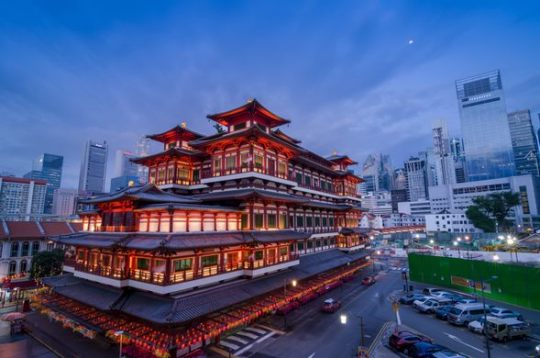
The Sacred Relic
This jewel is the core element of the vintage. This venerated sacred object which many believe to be a genuine toothpaste of Gautama Buddha, founder of Buddhism is placed in a stupa on the fourth floor of the temple. In this place devotees and wondering wizards come to pay homage and seek blessings, and as a result, there is an air of piety that exhales a muffin of spirituality.
Architectural Marvels
Such a step into the temple welcomes you to the divinity you will behold. Finely sculpted columns, rich wall paintings detailing Buddhist teachings, and a peaceful courtyard ornamented with lotus pools that are surrounded by the sensational force are imbued with a sense of tranquility. The central hall is lavishly adorned with golden Buddha statues and an impressive altar and it appeals to the people’s faith and tranquility.
Exploring the Museum
It is only next to the temple that the Buddha Tooth Relic Museum is found which serves as a perfect place to explore Buddhist art, culture, and history through a display of various exhibits. From the very first manuscripts and statues in reproduction with the life of an impression of Gautama Buddha to artifacts that highlight the way of life of the Buddhists in their community, the museum will take you through a magnificent journey that will weave across time and the established tradition.
Cultural Experiences
One can either go for a walk or run around the temple and integrate with different cultural experiences there or just hang around quietly within the temple grounds. Join in the chant sessions directed by monks or as they meditate. This may give you a sample of how Buddhism. One of the best things about traveling in the Kamchatka territory is getting an opportunity to take part in very expressive and cheerful local celebrations and ceremonies that are important to the native people.
Embracing Tranquility
However, the Buddha Tooth Relic Temple and Museum is not only a mixture of its historical and cultural significance, but is a pure sacred place of peacefulness and serenity. The calm atmosphere complemented by the aroma of fired incense and amiable recitations is the perfect sanctuary for one’s inner reflections and self-understanding.
Plan Your Visit
Singapore should be on your travel list if you are thinking about ways to spend your vacations. Take some time to look around the Buddha Tooth Relic Temple and Museum. Located in a single location by Chinatown, it’s easily accessible by public transport or just simply a relaxed stroll along bright streets. Also, it is always advisable to be dressed properly and demonstratively in these circumstances, since this is a place of worship and reverence.
Plan Your Visit with Trip Cabinet’s Singapore Tour Package from Visakhapatnam
If you are thinking of visiting Singapore from Vishakapatnam, a trip to the Buddha Tooth Relic Temple and its Museum would be a must on your list. Situated in Chinatown and reachable easily taking public transport or leisurely walking through these beautiful streets. Spice up your Singapore tour package from Visakhapatnam with Trip Cabinet, which offers curated experiences that include visiting this famous temple and many other exciting things to do under the sun in Sunny Singapore. Recognize that this is the holy place, so dress modestly and show respect. This is where the master lived and it is considered a sacred space
Conclusion
The Buddha Tooth Relic temple and museum occupies a prominent position among the country’s symbols paying homage to Singaporean multi-cultural nature and religious legacy. Be it a serious devotee of Buddhism or an unplanned tourist looking for a quiet moment, this site yields awaking appeals to the inner self and guarantees an experience that will be inscribed on the soul.
Straddle a journey of exploration enlightenment as well at Buddha Tooth Relic where history, spirituality, and peace combine all perfectly.
#BuddhaToothRelicTemple#SingaporeHeritage#ChinatownSingapore#BuddhistCulture#SpiritualJourney#TempleExploration#CulturalExperience#SingaporeLandmarks
0 notes
Text
"From Durbar Square to Stupa: A Day Tour of Kathmandu's Icons"
A Kathmandu day tour is a fantastic way to immerse yourself in the rich cultural heritage and vibrant atmosphere of Nepal's capital city. Here's a sample itinerary for a memorable day exploring the highlights of Kathmandu:

Morning:
Kathmandu Durbar Square: Start your day by visiting Kathmandu Durbar Square, a UNESCO World Heritage Site. Marvel at the intricate architecture of the ancient palaces, temples, and courtyards. Highlights include the Hanuman Dhoka Palace, Kumari Bahal (the residence of the Living Goddess), and the towering Taleju Temple.
Swayambhunath Stupa (Monkey Temple): Climb the steps to Swayambhunath Stupa, perched atop a hill west of Kathmandu Valley. Enjoy panoramic views of the city and the surrounding mountains while observing the resident monkeys that inhabit the area. Explore the colorful shrines, prayer wheels, and Tibetan Buddhist artifacts that adorn the stupa.
Lunch:
Lunch Break: Take a break to enjoy a traditional Nepali meal at a local restaurant. Sample delicious dishes such as dal bhat (rice and lentils), momos (dumplings), and Newari cuisine.
Afternoon:
Pashupatinath Temple: After lunch, head to Pashupatinath Temple, one of the most sacred Hindu temples in Nepal. Located on the banks of the Bagmati River, this temple complex is dedicated to Lord Shiva. Observe the ritual cremations taking place along the riverbanks and explore the intricately carved temples and shrines.
Boudhanath Stupa: Conclude your day tour with a visit to Boudhanath Stupa, one of the largest stupas in Nepal and a focal point of Tibetan Buddhism. Walk clockwise around the stupa, spinning prayer wheels and observing pilgrims performing kora (circumambulation). Take in the peaceful atmosphere and soak in the spiritual energy of this sacred site.
Optional Additions:
Thamel: If time permits, explore the bustling streets of Thamel, Kathmandu's tourist hub. Shop for souvenirs, handicrafts, and trekking gear, or relax at a cozy café and soak in the vibrant atmosphere.
Kathmandu Valley Sightseeing: Extend your day tour to include nearby attractions such as Bhaktapur Durbar Square, Patan Durbar Square, or the ancient city of Bhaktapur.
Conclusion:
A Kathmandu day tour offers a fascinating glimpse into the cultural, religious, and historical heritage of Nepal. From ancient palaces and temples to vibrant marketplaces and spiritual landmarks, Kathmandu is sure to captivate your senses and leave you with unforgettable memories of your time in the Himalayan kingdom.
#Kathmandu#KathmanduDayTour#NepalTravel#ExploreKathmandu#CulturalHeritage#HistoricSites#BuddhistCulture#HinduTemples#AdventureInKathmandu
0 notes
Text
Buddhist Temple - 63 Reasons Why You Should Visit China // Bored Panda
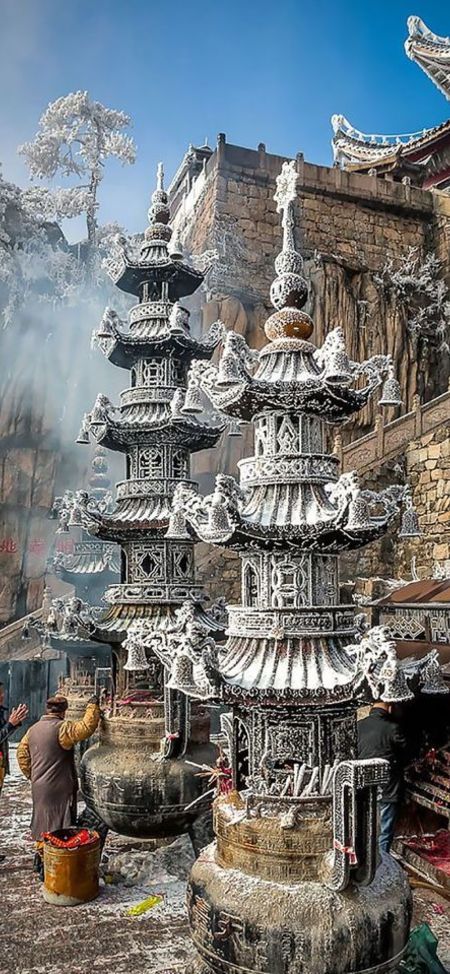
Discover the spiritual wonders of China's Buddhist temples. Check out these 63 compelling reasons to visit China, courtesy of Bored Panda.
0 notes
Text
Anuradhapura: Ancient City in Sri Lanka
Nestled in the heart of Sri Lanka, Anuradhapura stands as a living testament to the island nation’s rich history and cultural heritage. As one of the ancient capitals of Sri Lanka, this sacred city boasts an awe-inspiring collection of historical ruins, temples, and stupas that offer visitors a glimpse into the country’s illustrious past. In this blog, we will embark on a virtual journey to…
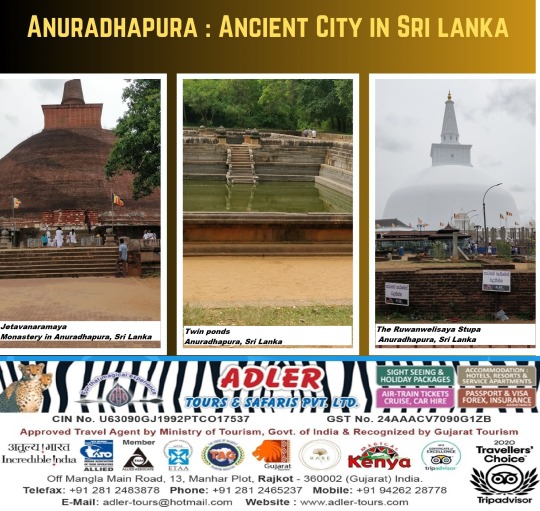
View On WordPress
#Ancient#AncientHeritage#Anuradhapura#BuddhistCulture#ExploreHistory#Historical#SacredCity#srilanka#UNESCO World Heritage Site
0 notes
Photo
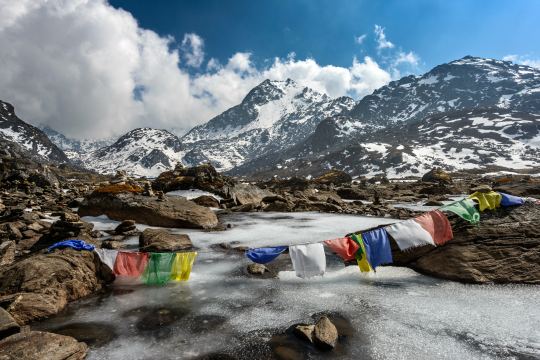
The Himalayas of Nepal offer a stunning view of majestic mountains, glaciers, and snow-capped peaks, adorned with colorful Buddhist prayer flags. This breathtaking landscape is a must-visit destination for adventure seekers and nature enthusiasts alike.
#nepal#himalayas#mountains#adventuretravel#naturallovers#trekking#mountaineering#skiing#whitewaterrafting#buddhistculture#spiritualjourney#travelinspiration#explorenepal#discovernepal
0 notes
Video
youtube
Sikkim Trip - Part 2 - Lachung to Pelling - English Version
#youtube#yumthangvalley#sikkimtourism#northeastindia#himalayas#naturephotography#travelindia#mountainlife#valleyofflowers#indiatravelgram#rumtekmonastery#buddhism#exploresikkim#spiritualjourney#monasterylife#buddhistculture#pemayangtsemonastery#gangtokdiaries#incredibleindia#travelgoals#wanderlust#culturevulture#culture vultures#beautifuldestinations#travelphotography#historybuff#history buff#sacredplaces#sacred places#peacefulretreat
1 note
·
View note
Photo

Feast your eyes on this glorious pendant depicting the Buddha engulfed in the flames of awareness. Made of solid 990 silver. Chain sold separately. Website link is in the bio. Only @mantrapiece . #mantrapiece #buddha #tinybuddha #buddhaspa #buddhadharmasangha #buddhaboard #buddhisttattoo #buddhistmonks #buddhistteachings #buddhistwisdom #buddhistmeditation #buddhistwedding #buddhistpsychology #buddhistbride #buddhistculture #buddhistquote #buddhistmemes #buddhisthumor #buddhistaltar #buddhistbootcamp #buddhistmantra #buddhistpainting #buddhistmonastry #buddhistcaves #buddhistcentre #buddhistshrine #buddhistrecovery #buddhistdoor (at Los Angeles, California) https://www.instagram.com/p/CeaZ8F8uqBY/?igshid=NGJjMDIxMWI=
#mantrapiece#buddha#tinybuddha#buddhaspa#buddhadharmasangha#buddhaboard#buddhisttattoo#buddhistmonks#buddhistteachings#buddhistwisdom#buddhistmeditation#buddhistwedding#buddhistpsychology#buddhistbride#buddhistculture#buddhistquote#buddhistmemes#buddhisthumor#buddhistaltar#buddhistbootcamp#buddhistmantra#buddhistpainting#buddhistmonastry#buddhistcaves#buddhistcentre#buddhistshrine#buddhistrecovery#buddhistdoor
1 note
·
View note
Photo
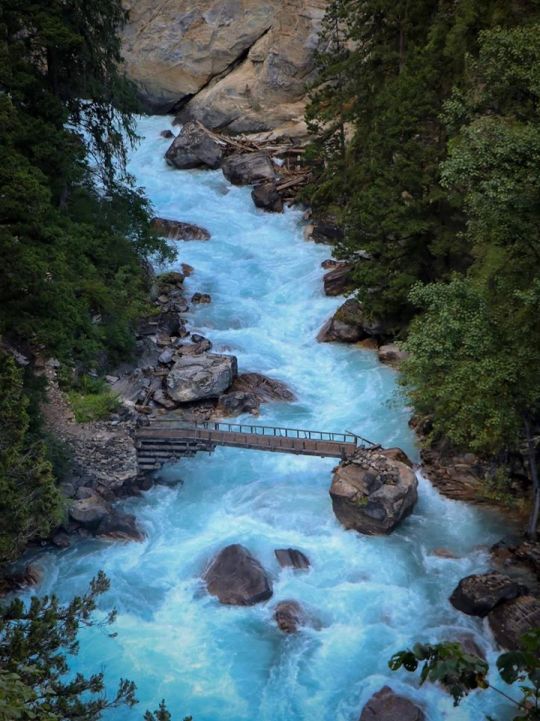
Fresh Himalayan water runs through the mountain region of Dolpo. Witness the unparalleled beauties of Dolpo/Dolpa, Nepal.
1 note
·
View note
Text
Lumbini Buddhist Circuit Tour- 7 Night 8 Days
Join us on our Buddhist Circuit Tour of Lumbini – 7 nights and 8 days, a transforming experience. Discover where Lord Buddha was born in Lumbini, Nepal, and visit noteworthy Buddhist landmarks such as the Maya Devi Temple, Ashoka Pillar, and several monasteries. Venture into the depth of Buddhism's profound spiritual values and doctrines as you explore the peaceful environment.
➡️ Trip Starts and Ends at Kathmandu
Bookings Open for Spring (March, April, May) 2024
📅 Outline Itinerary:
Day 1:Kathmandu Arrival
Day 2:Sightseeing Around The Buddhist Heritage sites of Kathmandu
Day 3:Visit Namo Buddha Via Dhulikhel
Day 4:Drive to Lumbini From Kathmandu
Day 5:Lumbini and Kapilavastu Sightseeing
Day 6:Visit Ramagrama Monastery and Drive to Chitwan
Day 7:Chitwan full-day Jungle activities
Day 8:Drive back to Kathmandu From Chitwan and Transfer To The Hotel
We are pleased to offer the flexibility of tailoring your journey to your desired duration and
For detailed information and bookings, visit our website:
Address- Z Street - Thamel, Kathmandu, Nepal
Phone- +977 1 4701233
Mobile, WhatsApp & Viber- +977 9849023179 (Dipak Pande)
Email- [email protected]
Website- www.mountainrocktreks.com
#LumbiniBuddhistTour #BuddhistPilgrimage #SpiritualJourney #BuddhistHeritage #LumbiniExperience #SacredSites #EnlightenmentTrail #BuddhistCulture #PeacefulRetreat #BirthplaceofBuddha #LumbiniItinerary #BuddhistTraditions #Thamel #Moonlighthotel #ramadaencore #paknajol #Zstreet #hotelmoonlightthamel #mountainrocktreks #MRT2024
0 notes
Photo
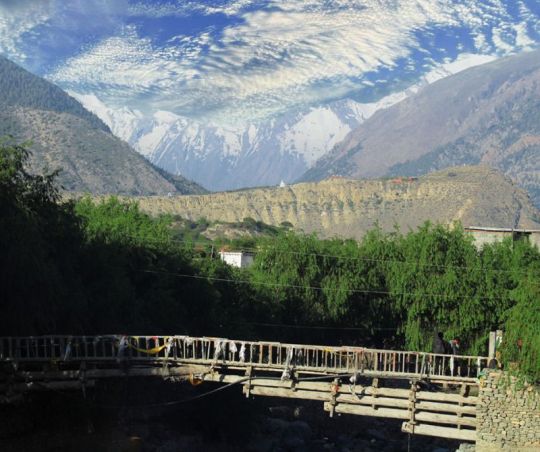
Grab a chance to experience the barren landscapes and Buddhist cultural attractions on the #lowermustang trekking.
#jomsom #muktinathtempletrek #jomsomtrekking #annapurnacircuit #landscape #buddhistculture #himalayas #naturephotography #trekking #advenutre #exploremustang
https://lnkd.in/gsgNXuaM
0 notes
Text
Borobudur and Angkor-Wat : How politics and power shaped temple art and architecture!

Society requires that architecture not only communicate the need of the building ( For example – a temple is needed for offering prayers) but also showcase the aspirations of its builders.
When architectural forms become the vehicles of content—in plan, elevation, and decoration; they are bound to become symbolic; their symbolism can be understood consciously or unconsciously by looking at the structure . Since both these structures wanted to show the strength and power of the King sanctioned by religion, it used pyramid shapes or mountain shapes to show strength and power or the circular pathways in Borbudur and Angor Wat !
Circumambulating the various layers of the massive step pyramid in Borbudur, Cambodia one is reminded of the large tantric Buddhist Mandala sculptures from the life of the Buddha. On the topmost platform, one can clearly notice 72 small stupas surrounding one large stupa. The stupas merge into the landscape, mimicking the mountains behind them. Borobudur or Candi Borobudur is a 9th century Mahayana Buddhist structure, comprising of nine layers, of which the first five are square shaped and three circular platforms sit atop those. A hidden layer exists below the first platform, commonly known as the hidden foot.
Rediscovered by accident, it had been enclosed in stone by the ancient builders before the completion of the monument. Although the exact reasoning behind it being hidden is unclear, some scholars speculate that the move is purely utilitarian, to prevent the edifice from sliding, before the completion of the monument.
The monument has three layers to its construction. The Kamadhatu- or the realm of desire, represents the phenomenal world we live in. The Rupadhatu - or the world of form, represents the world of forms of those materials that are of a higher nature than that of the phenomenal world. The Rupadhatu consists of four square galleries above the base, decorated by balustrades. Staircases are present in the middle and at both ends of every gallery. The third and final level is called the Arupadhatu- the realm of formlessness representing materials of the highest nature, beyond recognizable form or thought. The Arupadhatu consists of levels circular terraces that contains the central stupa.
The word “Stupa” originally referred to a mound that covered the ashes or relics of the Buddha, but later came to be associated with the monument built above relics of a religious person.
Although it is referred to as such, Borobudur is not a temple, because there is no idol to be worshipped. Borobudur represents the Buddha and his many teachings.
From a historic point of view Borobudur is connected to both Indian and ancient Indonesian structures that came before it. Although it is a stupa similar to the likes of those found in India, it is also in some ways comparable to a terrace pyramid structure, the likes of which have been found in ancient Indonesian terrace sanctuaries. Borobudur, a step pyramid stupa, is clearly a unique mixture of both cultures- global and local.
The series of reliefs on the lower levels tell the story of how the historic Buddha transformed, from his stay up in heaven, his previous lives and his first lecture at the Lumbini forest. The subtle differences in the reliefs indicate to us the different levels. The Borobudur terraces are a reward for the lessons taught in the galleries. And thus, the architecture of the time and place successfully capture the religious and cultural heritage of the Mahayana Buddhist practices and teachings in Indonesia at the time.
Angkor-Wat
Angkor-Wat is a 12th century Buddhist temple located in Angkor, Cambodia that was built by the Khmer king Suryavarman , in what is now known as Angkor, and was originally a temple dedicated to the Hindu God Vishnu. We know this because it largely differs from traditional Khmer architecture of the time in that it is an example of a west facing temple.
Containing three galleried temples, and an outer wall 3.6 km long, Angkor wat is a unique plan of the temple mountain and the concentric galleries common to Khmer architecture at the time.
Considered to be a representation of mount Meru, the divine mountain where the gods reside in traditional Hindu texts, the temple mountain is made to be an architectural depiction of the mountain. The mountain like shape of the temple was enhanced with its pyramid like elevated layers, while the elevated sanctuary at the center of the temple structure was supposed to represent the home of the gods.
Architecturally, this style can be characterized by its ogival, lotus bud shaped towers, broad passageways, cruciform terraces and axial galleries. Unlike traditional Khmer temples, however, Angkor Wat is oriented to the west rather than the east, leading some historian to believe that Suryavarman originally intended for it to be used as his funerary temple. Even the relief at the temple are in the reverse order of the usual, leading many to believe in its funerary intentions, as Brahminic funerary services involve rituals in reverse order too.
Apart from the more noticeable differences, Angkor wat also differs in the way that it uses measurements were used during its construction. In traditional Khmer temple architecture, measurements have several layers of meaning, both for utilitarian purposes and divine. The elongated corridor at the end of the north and south hallways have an uneven split, even though they are equally divided with 54 pillars on each side that add up to a total of 108 pillars, referencing the divine number that is often prayed to in ancient Hindu texts.
Temples were constructed to serve many purposes but perhaps the most important one was, to showcase the king’s connections with the divine and establish their legitimacy and power over the people. The temples became “testaments to royal legitimacy”. The Hindu King SuryaVarman ordained the Angor-wat temples and the Buddhist rulers of the Sailendra Dynasty got Borbudur made to show off their complete and total control and all pervasive powers over the masses , just like God they worshipped – an extension of the divine right theory and easy accept from the masses, both these aims were achieved by the building of these temples. Hence, they were more a political and religious statements than actual love for God!
Religio- political ideas that shaped the architecture
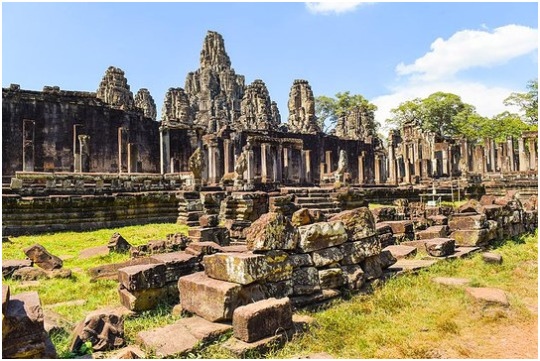
The study of ancient architecture not only in South East Asia but around the world shows that the most important and exalted buildings were always temples and churches or mosques as they stood for the universal appeal of religion in the State and an expressive and powerful icon of their rulers and their authority over the masses. It was and maybe is, the most permanent, and the most influential building in most communities and has a unique religio-political backing to its architecture, drawings and structure as a whole.
In Borbudur and Angor-Wat we see the same being portrayed, not so subtly. The Kings used their authority to make massive structures and reinforce their “divine right theory of kingship “which is a politico-religious theory of king being a representative of God on earth , just as powerful and divinely ordained and any attempt to restrict his powers or rebel against him is sacrilegious.
The typology of religious architecture is complex, because there is no basic requirements such as those needed in building a house or a school as the functions of any one religion involve many different kinds of activities, all of which change with the evolution of cultural patterns. Hence, there cannot be any one standard structure of temple architecture.
Even the place where the temple was erected shows power and privilege- both the structures are surrounded by a summit of pyramidal mounds and hillocks , only privileged members of the community were allowed to approach it from one side and no one else could enter from that side.
Massive lawns surrounding the temple at Angor wat

Both the temples had massive lawns and facades , symbolizing the power of the king and to make sure that the subjects never forgot to associate the King and the royal household with God and his omnipotent powers.
The temples were a statement of the kings power and complete control over his kingdom , sanctioned by God and hence these structures were built to showcase the same . As the main aim was to constantly remind the people of the complete and unconditional authority of the kings, the temple architecture and the hallways and the pyramidical structure was all designed to be imposing , powerful, vast and overwhelming .
The modern temple plans are determined by problems of space and need relationships, etc. but ancient temples had symbolic communication with the onlooker.
Decoration is the most easily recognised element of communicating an idea or content and both have been used well in Angor –Wat and Borbudur. Angor Wat has murals and stone etchings from the Ramayanas and of the Holy Trinity – Vishnu, Shiva and Brahma , while Borbudur is decorated with events from the life of Budhha, not only do they remind the visitor of God and his powers , but it also reminds him about the great kings that built them !
Bas relief from Angor Wat showing a scene from the Ramayana.
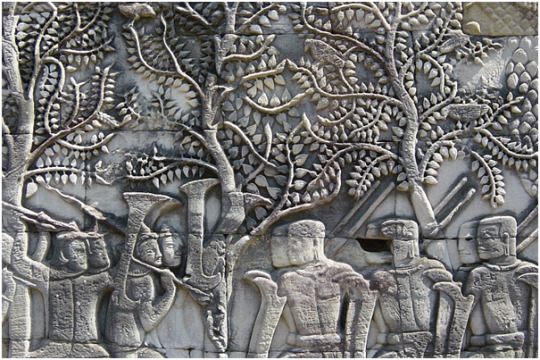
Hence, both these structures were not just mere places of worship but a crucible of the political and religious ideologies of their times. A perfect melange of the power of State as portrayed by the King and force of religion as portrayed through the temple structures, its domes, arches, pyramids and sculptures- to remind the general populace of the indomitable power of the monarchs.
#angor wat#borbudur#cambodia#temples#temple architecture#ancient temple architecture#religion#Templesin cambodia#buddhism#buddhiststupas#buddhist#ancienttemples#architecture#art#basrelief#templesindonesia#hinduculture#buddhistculture#stupas#mandala#studyinart#architectural
2 notes
·
View notes
Photo
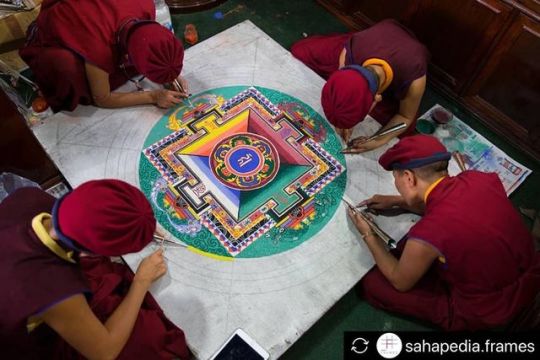
#Repost @sahapedia.frames ****** Nuns painstakingly create a sand mandala for hours on end, arranging colored grains of sand into intricate symbolic patterns. The traditional tool used in Himalayan sand-painting to create a mandala is called chak-pur. It is a conical shaped metal funnel, which has ridges on the sides which is tapped gently to pour the sand out. The underlying message of the mandala ceremony is nothing is permanent; all things in existence are in flux. Image credit : Sujata Khanna @sujatakhanna #buddhism #drukpa #nepal #kathmandu #buddhistlife #womensupportwomen #buddhistculture #kungfu #kungfulife #kathmandunepal #kathmanduvalley #nepalgram #instanepal #martialarts #chinesemartialarts #martialartslife #portrait #portraitphotographer #shaolinkungfu #monastery #nuns #portraitphotography #womenempowerment #photojournalism #womensday #selfdefense #mandala https://www.instagram.com/p/Bvii2MNg8Fp/?utm_source=ig_tumblr_share&igshid=g7vygertuwx6
#repost#buddhism#drukpa#nepal#kathmandu#buddhistlife#womensupportwomen#buddhistculture#kungfu#kungfulife#kathmandunepal#kathmanduvalley#nepalgram#instanepal#martialarts#chinesemartialarts#martialartslife#portrait#portraitphotographer#shaolinkungfu#monastery#nuns#portraitphotography#womenempowerment#photojournalism#womensday#selfdefense#mandala
1 note
·
View note
Photo
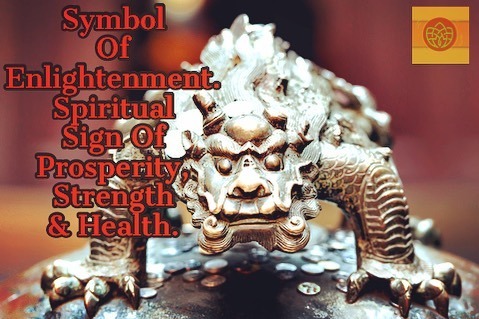
Dragon Statue in the The Jade Buddha Temple in Shanghai China. Dragons have been revered in the Chinese and Buddhist culture for at least 7,000 years. With enchanting dragon paintings that date back to the Han Dynasty (206 BC – 220 AD). There are nine types of Chinese dragons and they are considered symbols of power, abundance, success, wisdom, and good luck. The dragon is also a symbol for enlightenment in Buddhism. Today, dragons are seen as guardians by house owners in China. They are often seen in Chinese festivals, Buddhist Temples, on roofs and gates too.#buddhistculture #chineseculture #handynasty #abundance #buddhist #success #enlightenment #chinesedragon #buddhisttemple #guardians #higherconsciousness #higherawakening #higherself #deepmeditationtribe #deepmeditation #spiritualjourney #beingpresent #raiseyourvibrations #gaymeditation #womenmeditate #menmeditate #positivethoughtsonly #cognitivethinking https://www.instagram.com/p/CVL2oF1JebZ/?utm_medium=tumblr
#buddhistculture#chineseculture#handynasty#abundance#buddhist#success#enlightenment#chinesedragon#buddhisttemple#guardians#higherconsciousness#higherawakening#higherself#deepmeditationtribe#deepmeditation#spiritualjourney#beingpresent#raiseyourvibrations#gaymeditation#womenmeditate#menmeditate#positivethoughtsonly#cognitivethinking
0 notes
Text
Explore The Buddhist Culture
Visit the Gadaladeniya ancient temple while you holiday in Kandy! Find out more attractions on websites like Kandy Escapes
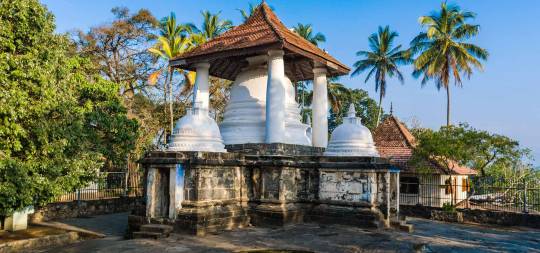
0 notes
Photo
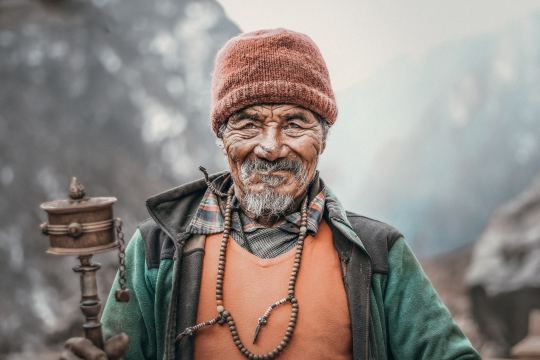
A man with a prayer wheel and mala is a Buddhist. The wheel generates positive energy and purifies negative karma. The mala counts prayers for meditation and inner peace. These tools deepen spiritual practice and connect with Buddha's teachings.
#buddhist#prayerwheel#mala#positive energy#innerpeace#spiritual practices#buddhateachings#mindfulness#buddhism#compassion#buddhistculture
0 notes
Video
youtube
Sikkim Trip - Part 2 - Lachung to Pelling - Vlog 0043
#youtube#yumthangvalley#sikkimtourism#northeastindia#himalayas#naturephotography#travelindia#mountainlife#valleyofflowers#indiatravelgram#rumtekmonastery#buddhism#exploresikkim#spiritualjourney#monasterylife#buddhistculture#pemayangtsemonastery#gangtokdiaries#incredibleindia#travelgoals#wanderlust#culturevulture#culture vultures#beautifuldestinations#travelphotography#historybuff#history buff#sacredplaces#sacred places#peacefulretreat
1 note
·
View note